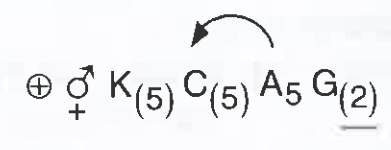Veriation of response to geotropism is found in the floral stalk of
Sunflower
Groundnut
Poppy
Both B and C.
The correct Answer is:B
To solve the question regarding the variation of response to geotropism found in the floral stalk of certain plants, we can follow these steps:
1. Understand Geotropism:
- Geotropism is the growth response of a plant to gravity. Roots typically grow downward (positive geotropism), while stems grow upward (negative geotropism).
2. Analyze the Options:
- The options provided are:
1. Sunflower
2. Groundnut
3. Poppy
4. Both pea and seed
3. Evaluate Each Option:
- Sunflower: Known for phototropism, where it grows towards light. It does not primarily exhibit geotropism in its floral stalk.
- Groundnut: The floral stalk of the groundnut is curved and grows downward, indicating a positive geotropic response. This is a strong candidate.
- Poppy: Similar to sunflowers, poppies are also sensitive to light (phototropism) and do not show significant geotropic response in their floral stalk.
- Both pea and seed: While peas can exhibit some geotropic response, they are not specifically known for a variation in response to geotropism in their floral stalk.
4. Conclusion:
- Based on the analysis, the correct answer is Groundnut, as it shows a clear variation of response to geotropism with its floral stalk curving downward due to gravitational pull.
Final Answer:
The variation of response to geotropism is found in the floral stalk of Groundnut.
- Geotropism is the growth response of a plant to gravity. Roots typically grow downward (positive geotropism), while stems grow upward (negative geotropism).
- The options provided are:
1. Sunflower
2. Groundnut
3. Poppy
4. Both pea and seed
- Sunflower: Known for phototropism, where it grows towards light. It does not primarily exhibit geotropism in its floral stalk.
- Groundnut: The floral stalk of the groundnut is curved and grows downward, indicating a positive geotropic response. This is a strong candidate.
- Poppy: Similar to sunflowers, poppies are also sensitive to light (phototropism) and do not show significant geotropic response in their floral stalk.
- Both pea and seed: While peas can exhibit some geotropic response, they are not specifically known for a variation in response to geotropism in their floral stalk.
- Based on the analysis, the correct answer is Groundnut, as it shows a clear variation of response to geotropism with its floral stalk curving downward due to gravitational pull.
The variation of response to geotropism is found in the floral stalk of Groundnut.
Topper's Solved these Questions
- Plant Growth and MovementsBOOK - DINESH PUBLICATION ENGLISHCHAPTER - Plant Growth and MovementsEXERCISE - BRAIN TEASERS-IV
41 Videos
- Plant Growth and MovementsBOOK - DINESH PUBLICATION ENGLISHCHAPTER - Plant Growth and MovementsEXERCISE - RQ
435 Videos
- PLANT BREEDING AND DISEASE CONTROLBOOK - DINESH PUBLICATION ENGLISHCHAPTER - PLANT BREEDING AND DISEASE CONTROLEXERCISE - Check your Grasp
10 Videos
- PLATYHELMINTHES-THE FLAT WORMSBOOK - DINESH PUBLICATION ENGLISHCHAPTER - PLATYHELMINTHES-THE FLAT WORMSEXERCISE - check your grasp
9 Videos
Similar Questions
 is the floral formula of
is the floral formula of
View Solution is the floral formula of
is the floral formula of
View Solution is the floral formula of :
is the floral formula of :
View SolutionExample of positive geotropism is
View Solution is the floral formula of :-
is the floral formula of :-
View SolutionFloral bud tendril is found in
View Solution is floral formula of
is floral formula of
View SolutionThe area of response in phototropism and geotropism is
View SolutionRoot shows negative geotropic in
View SolutionGeotropic response of root is due to
View Solution
